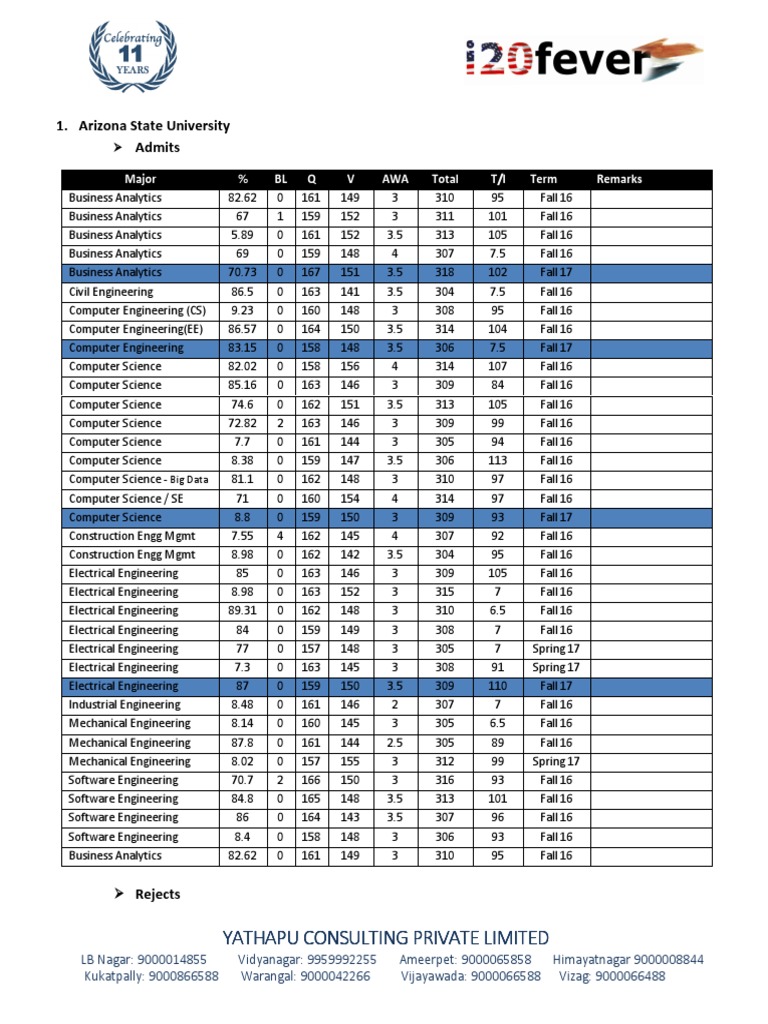In the realm of higher education, the admissions process is often surrounded by a veil of complexity and nuance. As we delve into the intricacies of the Arizona State University (ASU) Common Data Set, one cannot help but pose an intriguing question: How do the metrics compiled within this dataset illuminate the multifaceted dimensions of cultural relativism in admissions practices? This inquiry invites us to traverse beyond mere statistics to explore implications that extend into the very fabric of academic diversity and inclusivity.
The Common Data Set serves as a pivotal resource, elucidating various dimensions of an institution’s admissions processes, including the demographics of applicants, acceptance rates, and criteria used for evaluation. For ASU, these metrics encapsulate an institutional ethos that serves a diverse student body. However, the challenge lies in interpreting these figures through the lens of cultural relativism—a mode of understanding that emphasizes the context-dependent nature of human behavior and social practices.
At its core, cultural relativism posits that the norms and values of different societies cannot simply be judged by the standards of another culture. Applying this perspective to the admissions data necessitates an examination of how varying cultural backgrounds of applicants may influence their reception within the university. For instance, consider the criteria by which students are evaluated: standardized test scores, high school GPAs, and extracurricular activities. These metrics, although robust in structure, may inadvertently privilege particular cultural narratives while overlooking alternative pathways that different groups of students may embody.
A striking observation within the ASU Common Data Set is the increasing diversity of enrolled students, highlighting a commitment to inclusivity and representation across cultural strata. This diversification pushes the boundaries of conventional admissions, inviting further exploration into affirmative action policies that seek to level the playing field. Yet, could this affirmative action be perceived through a cultural relativist’s lens as a double-edged sword? On one hand, it facilitates access and equity; on the other, it may inadvertently create a dichotomy between those who “fit” the expected mold of a successful candidate and those who offer rich, albeit unconventional, narratives.
Furthermore, the dataset reveals enrollment statistics that denote a significant percentage of first-generation college students. These figures prompt critical discussions around educational equity and the socio-economic barriers that often accompany such identities. The experience of first-generation students can be remarkably different from their peers, influenced by cultural expectations regarding higher education. This raises the question: can a singular admissions formula capture the unique challenges faced by these students, or does it necessitate a culturally attuned framework that acknowledges their distinctive journeys?
The admissions landscape, as gleaned from the ASU Common Data Set, also reflects broader societal trends including globalization, migration, and the redefinition of meritocracy. Within this evolving milieu, many institutions are facing pressure to adapt their admissions criteria to better reflect a globalized perspective. This brings forth a compelling challenge: how can universities reconcile the global influx of diverse candidates with maintaining academic rigor and excellence? Embracing cultural relativism in this context provides a pathway for understanding that not all merit is derived from conventional academic success; soft skills, cultural competencies, and lived experiences are equally vital components that can enrich the university environment.
Another salient aspect captured in the dataset is the impact of demographic shifts on gender and ethnicity, providing a rich tapestry for analysis. ASU’s admissions statistics exhibit a trends toward higher enrollment of underrepresented minorities. The implications of this trend are profound. They urge a reconsideration of how institutions perceive and define “success” within a culturally pluralistic student body. Does a greater representation of diverse cultures within higher education institutions enhance the educational experience for all students, fostering an ethos of understanding and collaboration?
In the context of cultural relativism, one must confront the paradox of belonging versus otherness. The challenge lies in reconciling these elements, particularly when selective admissions may naturally engender perceptions of competition rather than collaboration among cultures. As students navigate their identities within the academic tapestry of ASU, the question arises: How can the university cultivate an environment where multiculturalism is not merely tolerated but celebrated? The Common Data Set serves as more than a statistical compilation; it delineates the need for actionable frameworks that ensure inclusivity transcends surface-level diversity.
Moreover, the role of technology in the admissions process cannot be overlooked. The rise of data analytics and artificial intelligence in evaluating prospective students introduces a modern twist to this ongoing narrative. How do these advanced methodologies align with the tenets of cultural relativism? While algorithms can process vast datasets efficiently, they risk obfuscating individual stories and cultural nuances. Consequently, the challenge is twofold: to harness technology for efficiency while retaining a human-centered approach that honors the diverse experiences of applicants.
In conclusion, the analysis of the Arizona State University Common Data Set through a cultural relativist lens reveals a plethora of insights regarding admissions processes and the implications for academic diversity. The interplay between cultural identities, systemic barriers, and institutional practices surfaces as an overarching theme demanding continuous reflection and adaptation. As universities like ASU contend with these dynamic cultural dialogues, the potential for transformative change is at hand. A holistic understanding that intertwines diverse cultural narratives with institutional frameworks not only serves to enrich the university experience but also nurtures a more inclusive society, one student at a time.
